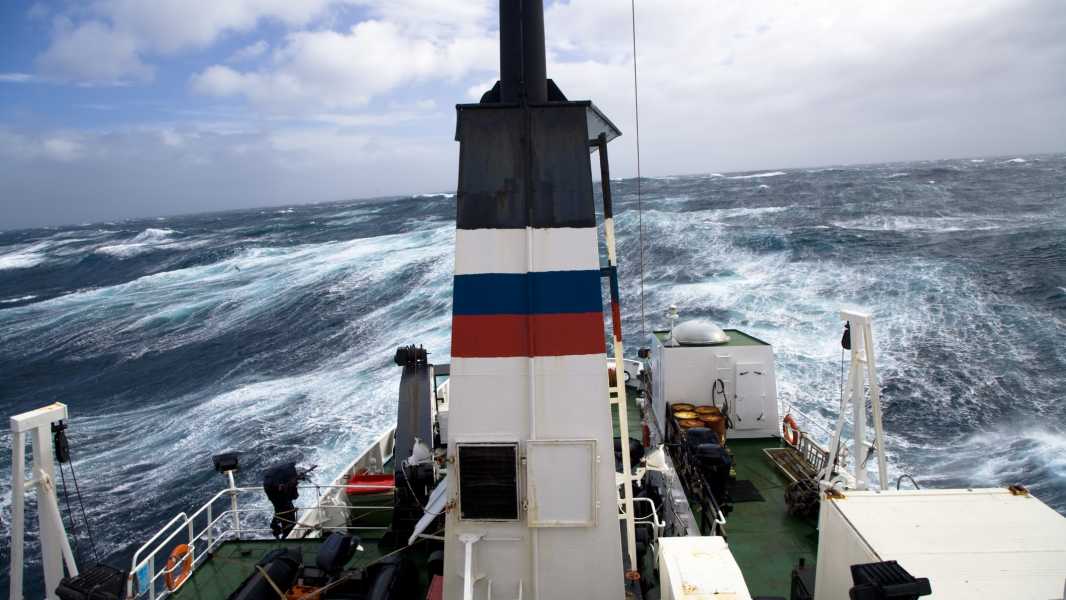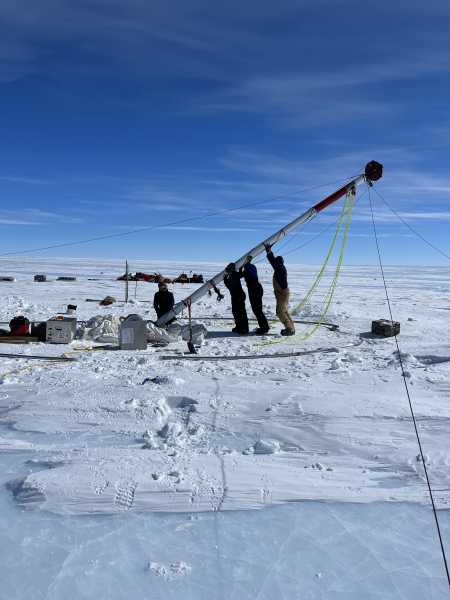
The waves in the Drake Passage are so powerful that their effects are known as the “Drake Shake.” (Photo by Mlenny/Getty Images)
The Drake Passage is an ocean channel that lies between the southern tip of South America and the western part of the Antarctic Peninsula. It is named after the 16th-century explorer Sir Francis Drake and is known for its destructive storms and giant waves reaching heights of up to 80 feet (25 meters).
The passage is “the most terrifying piece of ocean on the planet,” Alfred Lansing wrote in his 1959 book Endurance: Shackleton’s Incredible Voyage to Antarctica. The channel is about 600 miles (965 kilometers) wide, making it relatively narrow compared to the surrounding ocean and causing the currents that pass through it to speed up. The same goes for the southerly winds that blow freely from west to east around Antarctica before reaching the Drake Passage.
As the winds rush through the passage, they cause huge waves to form, some of which can be dangerous — and even deadly — for passengers on ships making the 48-hour crossing. At best, these waves create an uncomfortable ride known as the “Drake shakes.”
“It’s always funny when you’re heading out to dinner and all the tables have sticky mats on them to stop your plates and utensils from sliding around,” Karen Heywood, a professor of physical oceanography at the University of East Anglia in the UK who crossed the Drake Passage in 2024, told National Geographic.
The Drake Passage is a “melting pot” of currents from the Atlantic, Pacific and Southern Oceans, Haywood said. The waters are so turbulent that layers that normally form seas mix, causing the passage to absorb far more carbon than other parts of the ocean.
According to National Geographic, the world's oceans absorb more than 30% of the carbon that humanity emits into the atmosphere each year, and the Drake Passage may be one of the few places where this activity is particularly noticeable.
@theworldpursuit
Super Relaxed Antarctica Trip #antarctic #drakepassage
♬ My Heart Will Go On (Titanic) – Malihe Saidi and Faraz Taali
The strait also helps maintain Antarctica's cold climate by blocking warm air that would otherwise flow south from South America. Research suggests that the opening of the Drake Passage between 49 and 17 million years ago led to significant cooling in Antarctica and contributed to the formation of giant ice sheets on the continent.
The temperature change when crossing the strait is noticeable even to people on ships, Alberto Naveira Garabato, a professor of physical oceanography at the University of Southampton in the U.K., told National Geographic. “Suddenly you’re in this icy world,” Naveira Garabato said.
So while the strong winds and currents inside the strait create terrible conditions for passengers, they also play an important role in keeping Antarctica cold, although climate change is slowing this system down.
If it weren't for the Drake Passage and its stormy weather, the frozen continent would likely have much less ice than it does now.
Discover more amazing places as we explore the fantastic history and science behind some of the most spectacular landscapes on Earth.
TOPICS incredible places
Sourse: www.livescience.com





